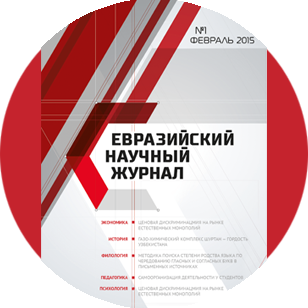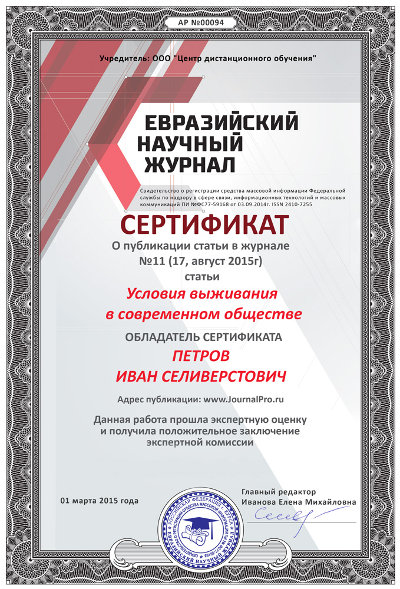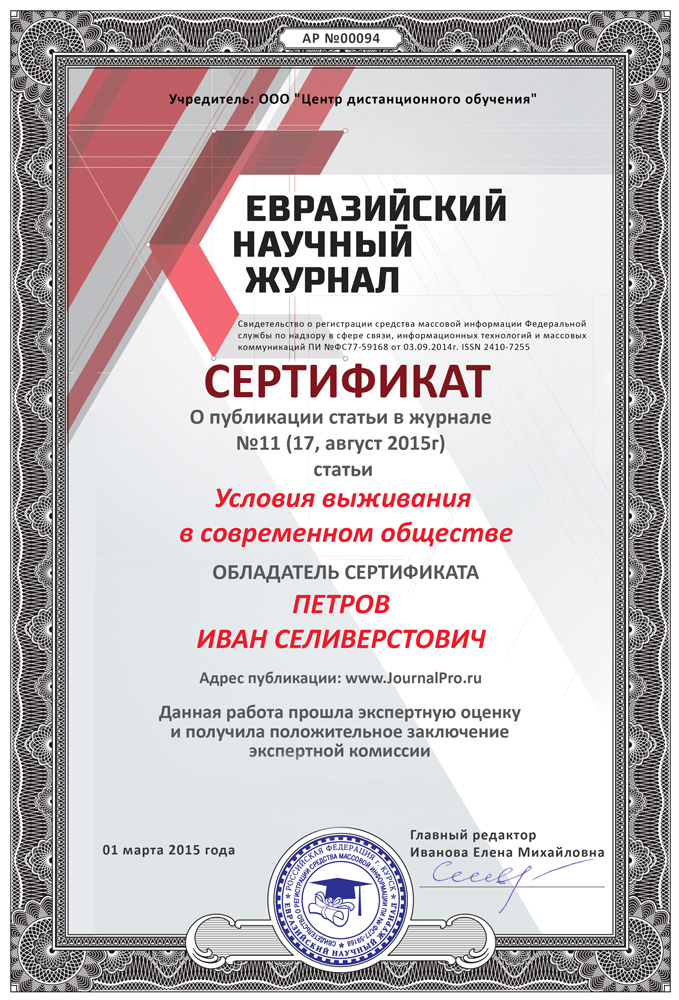–°—А–Њ—З–љ–∞—П –њ—Г–±–ї–Є–Ї–∞—Ж–Є—П –љ–∞—Г—З–љ–Њ–є —Б—В–∞—В—М–Є
+7 995 770 98 40
+7 995 202 54 42
info@journalpro.ru
ўЕўЗЎІЎ±ЎІЎ™ ўБўК ЎІўДўДЎЇЎ© ўИЎІўДЎ™ўБўГўКЎ± Language and Thinking Skills
–†—Г–±—А–Є–Ї–∞: –°–Њ—Ж–Є–Њ–ї–Њ–≥–Є—З–µ—Б–Ї–Є–µ –љ–∞—Г–Ї–Є
–Ц—Г—А–љ–∞–ї: «–Х–≤—А–∞–Ј–Є–є—Б–Ї–Є–є –Э–∞—Г—З–љ—Л–є –Ц—Г—А–љ–∞–ї вДЦ10 2018» (–Њ–Ї—В—П–±—А—М, 2018)
–Ъ–Њ–ї–Є—З–µ—Б—В–≤–Њ –њ—А–Њ—Б–Љ–Њ—В—А–Њ–≤ —Б—В–∞—В—М–Є: 3661
–Я–Њ–Ї–∞–Ј–∞—В—М PDF –≤–µ—А—Б–Є—О ўЕўЗЎІЎ±ЎІЎ™ ўБўК ЎІўДўДЎЇЎ© ўИЎІўДЎ™ўБўГўКЎ± Language and Thinking Skills
Inaam Jabbar Abed
University of diyala
college of education for human sciences
Arabic language department
ЎђЎІўЕЎєўЗ ЎѓўКЎІўДўЙ /ўГўДўКўЗ ЎІўДЎєўДўИўЕ ЎІўДЎ•ўЖЎ≥ЎІўЖўКЎ©¬† ўВЎ≥ўЕ ЎІўДўДЎЇЎ© ЎІўДЎєЎ±Ў®ўКЎ©
E-mail: enaam_jabbar@yahoo.com
ўЕЎ≥Ў™ЎЃўДЎµ ЎІўДЎ®Ў≠ЎЂ :
ўКЎ±ўЕўК ўЗЎ∞ЎІ ЎІўДЎ®Ў≠ЎЂ ЎІўДўЙ ўЕЎєЎ±ўБЎ© Ў£ўЗўЕўКЎ© ЎІўДўЕўЗЎІЎ±ЎІЎ™ ўБўК ЎІўДўДЎЇЎ© ўИЎІўДЎ™ўБўГўКЎ±ЎМ ўБўВЎѓ Ў£ЎіЎ™ўЕўД ЎІўДЎ®Ў≠ЎЂ ЎєўДўЙ ЎІўДўЕўВЎѓўЕЎ© ўИЎІўЗўЕўКЎ© ЎІўДЎ®Ў≠ЎЂ ўИўГЎ∞ўДўГ ўЕЎіўГўДЎ© ЎІўДЎ®Ў≠ЎЂ ЎІўДўЕЎ™ЎґўЕўЖЎ© Ў£ўЗўЕўКЎ© ЎІўДўДЎЇЎ© ўИЎІўДўИЎЄЎІЎ¶ўБ ЎІўДЎ™ўК Ў™Ў§ЎѓўКўЗЎІ ўЕўЖ ўИЎђўЗЎ© ўЖЎЄЎ± ўБўДЎ≥ўБўКЎ© ўИЎІЎђЎ™ўЕЎІЎєўКЎ© ўИЎІўДЎ™ўК Ў™ўЖЎєўГЎ≥ ЎєўДўЙ ЎґЎєўБ ЎІўДЎІЎѓЎІЎ° ЎІўДўДЎЇўИўК ЎІўДЎ∞ўК ўКўВЎѓўЕўЗ ЎІўДўЕЎ™ЎєўДўЕўИўЖ ЎМ ўИўКЎіЎ™ўЕўД ЎІўДЎ®Ў≠ЎЂ ЎІўКЎґЎІ ўЕўБўЗўИўЕ ЎІўДЎ™ўИЎІЎµўД ЎІўДўДЎЇўИўК ЎІўДўЕЎ®ўЖўК ЎєўДўЙ ЎІЎ≥ЎІЎ≥ ЎІўДўДЎЇЎ© ЎІўДЎ∞ўК ўКЎєЎѓ ўЕўЖ Ў£ўЗўЕ ЎІўДўЕўБЎІўЗўКўЕ ЎІўДўЕЎ±Ў™Ў®ЎЈЎ© Ў®ЎІўДЎ•ўЖЎ≥ЎІўЖЎМ ўИЎєЎѓўС ЎІўДЎ™ўБўГўКЎ± ўЗўИ ЎІўДЎ≠ўКЎІЎ© ЎІўДЎ™ўК ўДЎІ ўКўЕўГўЖ ЎІўДЎІЎ≥Ў™ўЕЎ±ЎІЎ± Ў®ўЗЎІ ўИЎІўДЎ∞ўК ўКўЗЎѓўБ ЎІўДўЙ ўИЎІўДЎІўВЎ™Ў±ЎІЎ® ўЕўЖ ЎЃўДЎІўД Ў™ўИўБЎ± ЎєўЖЎІЎµЎ± ЎІўДЎ™ўИЎІЎµўД ЎІўДўЕЎ™ўЕЎЂўДЎ© Ў®ЎІўДўЕЎ±Ў≥ўД ўИЎІўДЎ±Ў≥ЎІўДЎ© ўИЎІўДўЕЎ≥Ў™ўВЎ®ўД ўИЎ®ўКЎ¶Ў© ЎІўДЎІЎ™ЎµЎІўД ўИЎєўЖЎІЎµЎ±ўЗ ўИўВўЖўИЎІЎ™ўЗ ўИЎµўКЎІЎЇЎ™ўЗ ЎІўДўЕўЕўГўЖ ЎІЎђЎ±ЎІЎ§ўЗЎІ ўЕўЖ ЎЃўДЎІўД ЎІўДЎІЎ™ЎµЎІўД ЎІўДЎ∞ЎІЎ™ўК ўИЎІўДЎІЎ™ЎµЎІўД ЎІўДЎіЎЃЎµўК ўИЎІўДЎІЎ™ЎµЎІўД ЎІўДЎєЎІўЕ ЎІўДЎђўЕЎІўЗўКЎ±ўК ўИЎІўДЎЂўВЎІўБўК ўИўЕўЗЎІЎ±ЎІЎ™ўЗЎІ ЎІўДЎІЎ±Ў®ЎєЎ© (ЎІўДЎІЎ≥Ў™ўЕЎІЎє ўИЎІўДЎ≠ЎѓўКЎЂ ўИЎІўДўВЎ±ЎІЎ°Ў© ўИЎІўДўГЎ™ЎІЎ®Ў©) ўИЎѓўИЎ± ўГўД ўЕўЗЎІЎ±Ў© ўБўК ЎєўЕўДўКЎ© ЎІўДЎІЎ™ЎµЎІўД ЎІўДўДЎЇўИўК ўИЎ£ўЗўЕўКЎ™ўЗЎІ ўИЎІўДЎєўДЎІўВЎ© ўБўКўЕЎІ Ў®ўКўЖўЗЎІ ўИўГЎ∞ўДўГ ЎІўЕўГЎІўЖўКЎ© ЎІўДўЕЎєўДўЕ ўДўДўВўКЎІўЕ Ў®ЎЃЎЈўИЎІЎ™ ўИЎЈЎ±ЎІЎ¶ўВ Ў™ЎѓЎ±ўКЎ≥ўКЎ© Ў≠ЎѓўКЎЂЎ© ўДЎ™ўЕўГўКўЖ ЎІўДўЕЎ™ЎєўДўЕўКўЖ ўЕўЖ ЎІўДЎ≥ўКЎЈЎ±Ў© ЎєўДўЙ Ў™ўДўГ ЎІўДўЕўЗЎІЎ±ЎІЎ™.
ЎІўДўЕўВЎѓўЕЎ© :
ЎІўЖ ўЕўЖ Ў£ўЗўЕ Ў£ЎіўГЎІўД ЎІўДўЖЎіЎІЎЈ ЎІўДЎІЎђЎ™ўЕЎІЎєўК ЎІўДўЕЎ±Ў™Ў®ЎЈЎ© ўБўК ўЕўЗЎІЎ±ЎІЎ™ ЎІўДўДЎЇЎ© ўИЎІўДЎ™ўБўГўКЎ± Ў®ЎіўГўД ўЕЎ™Ў±ЎІЎ®ЎЈ Ў®ЎєЎґўЗЎІ ЎІўДЎ®ЎєЎґ ўБўК ЎђўИўЗЎ±ўЗЎІ ўИЎЃЎµЎІЎ¶ЎµўЗЎІЎМ ЎІўЖ ЎІўДЎ™ўБўГўКЎ± ўЗўИ ўЕўЖ ЎІўДЎєўЕўДўКЎІЎ™ ЎІўДЎ∞ўЗўЖўКЎ© ўДЎєўГЎ≥ ЎІўДўИЎІўВЎє ЎІўДўЕўИЎґўИЎєўК ЎІўДЎ∞ўК ўКЎіўГўД Ў£ЎєўДўЙ ЎѓЎ±ЎђЎ© ўЕўЖ ЎІўДЎ•ЎѓЎ±ЎІўГ ЎІўДЎ®ЎіЎ±ўКЎМ ўИўКўИўБЎ± ЎІўДЎ™ўБўГўКЎ± Ў®ЎіўГўД Ў±Ў¶ўКЎ≥ўК ЎІўДўЕЎєЎ±ўБЎ© Ў≠ўИўД ЎІўДЎЃЎµЎІЎ¶Ўµ ўИЎІўДЎєўДЎІўВЎІЎ™ ЎІўДЎ£Ў≥ЎІЎ≥ўКЎ© ўДўДўИЎІўВЎє ЎІўДўЕўИЎґўИЎєўКЎМ ўИўЗўИ ўЕўИЎђўИЎѓ ўБўК ЎєўЕўДўКЎ© ўЕЎєЎ±ўБЎ© ЎІўДЎІўЖЎ™ўВЎІўД ўЕўЖ ЎІўДЎЄЎІўЗЎ±Ў© Ў•ўДўЙ ЎІўДЎђўИўЗЎ±.
ўИЎ™ўГўЕўЖ Ў£ўЗўЕўКЎ© ЎІўДўЕўЗЎІЎ±ЎІЎ™ ўБўК ЎІўДўДЎЇЎ© ўИЎІўДЎ™ўБўГўКЎ± ўЕўЖ ЎЃўДЎІўД ЎІўДўИЎЄЎІЎ¶ўБ ЎІўДЎ™ўК Ў™Ў§ЎѓўКўЗЎІ, ўИўВЎѓ ЎІўЗЎ™ўЕ ЎІЎЇўДЎ® ЎІўДўЕЎ™ЎЃЎµЎµўКўЖ ўБўК ўЗЎ∞ЎІ ЎІўДЎђЎІўЖЎ® ўБЎІўДЎ®ЎєЎґ ўКўЖЎЄЎ± Ў•ўДўКўЗЎІ ўЕўЖ Ў±Ў§ўКЎ© ўБўДЎ≥ўБўКЎ© ЎМўИўЕўЖўЗўЕ ўЕўЖ ўЖЎЄЎ± ЎІўДўКўЗЎІ ўЕўЖ Ў±Ў§ўКЎ© ЎІЎђЎ™ўЕЎІЎєўКЎ© ЎМўИўЕўЖўЗўЕ ўЕўЖ ЎђўЕЎє Ў®ўКўЖ ЎІўДЎђЎІўЖЎ®ўКўЖ, ўИЎІўЖ ЎІўДЎ£ЎµўД ўБўК ўЕўИЎґўИЎє ЎІўДўДЎЇЎ© ўЗўК Ў£ўЖ Ў™ўГўИўЖ ўЕЎ≥ўЕўИЎєЎ©, ўДўГўЖ ЎєўЖЎѓўЕЎІ ЎєЎ±ўБЎ™ ЎІўДўГЎ™ЎІЎ®Ў© Ў®ЎІўДЎ±Ў≥ўЕ Ў£ўИ Ў®ЎІўДЎ≠Ў±ўБ ўЕўЖўВўИЎіЎ© ЎєўДўЙ ЎІўДЎ≠ЎђЎ± ўИўЕўГЎ™ўИЎ®Ў© ЎєўДўЙ ЎІўДўИЎ±ўВ, Ў£ЎµЎ®Ў≠Ў™ ўЗўЖЎІўГ ўДЎЇЎ© ўЕўВЎ±ўИЎ°Ў© ўИЎ®Ў∞ўДўГ Ў£ЎµЎ®Ў≠Ў™ ўЗўЖЎІўГ ўДЎЇЎ™ЎІўЖ Ў•Ў≠ЎѓЎІўЗўЕЎІ Ў≥ўЕЎєўКЎ© ўИЎІўДЎ£ЎЃЎ±ўЙ Ў®ЎµЎ±ўКЎ© ўЛ.
ўЕЎіўГўДЎ© ЎІўДЎ®Ў≠ЎЂ:
ЎІўЖ ўЕўЖ ўКЎ™ЎІЎ®Ўє ўЕЎ≥Ў™ўИўЙ ЎІўДЎІўБЎ±ЎІЎѓ ЎІўДўЕЎ™ЎєўДўЕўКўЖ ўДЎ®ЎєЎґ ЎІўДўЕўЗЎІЎ±ЎІЎ™ ўБўК ЎІўДўДЎЇЎ© ўИЎІўДЎ™ўБўГўКЎ± ўКўДЎІЎ≠ЎЄ Ў£ўЖ ЎІўДўЕЎіўГўДЎ© ЎІўДЎ±Ў¶ўКЎ≥ўКЎ© ўБўК ЎєўЕўДўКЎ© ЎІўДЎ™ўИЎІЎµўД ЎІўДўДЎЇўИўК ўБўКўЕЎІ Ў®ўКўЖўЗўЕ ЎМЎ£ўИ ўБўК ўЕЎІ Ў®ўКўЖўЗўЕ ўИЎ®ўКўЖ ЎІўДўЕЎђЎ™ўЕЎє Ў™ўГўЕўЖ ўБўК ўИЎђўИЎѓ Ў®ЎєЎґ ЎІўДЎ≠ўИЎІЎђЎ≤ ЎІўДўЖўБЎ≥ўКЎ© ўИЎІўДЎІЎђЎ™ўЕЎІЎєўКЎ© ЎМ ўИўЗЎ∞ЎІ ўЕЎІ ўКўЕўЖЎє Ў®ўКўЖўЗўЕ ўИЎ®ўКўЖ ЎІўДўДЎЇЎ© ЎІўДЎ™ўК ўКЎ™ЎєўДўЕўИўЖўЗЎІ, ўИЎІўЖ ўЗЎ∞ЎІ ЎІўДЎђЎІўЖЎ® ўКЎєўИЎѓ ўДўДўЕЎ™ЎєўДўЕ ўЖўБЎ≥ўЗ Ў£Ў≠ўКЎІўЖЎІўЛ ўИЎ•ўДўЙ ЎІўДЎЃўДўБўКЎ© ЎІўДўДЎЇўИўКЎ© ўИЎІўДЎЂўВЎІўБўКЎ© ўИЎІўДЎІЎђЎ™ўЕЎІЎєўКЎ©, ўИўДўГўЖ ўЗЎ∞ўЗ ЎІўДўЕЎіўГўДЎ© ўВЎѓ Ў™ЎЃЎ™ўДўБ ўЕўЖ ўЕЎ™ЎєўДўЕ Ў•ўДўЙ ЎҐЎЃЎ± ўИЎ∞ўДўГ Ў™Ў®ЎєЎІ ўДЎІЎЃЎ™ўДЎІўБ ўБўК ЎІўДЎіЎЃЎµўКЎ© ЎІўИ ЎІЎЃЎ™ўДЎІўБ ўБўК ЎІўДЎ®ўКЎ¶Ў© ЎМ ўИўБўК Ў®ЎєЎґ ЎІўДЎ£Ў≠ўКЎІўЖ Ў™Ў≠ЎѓЎЂ Ў®ЎєЎґ ЎІўДўЕЎіЎІўГўД Ў£ЎЂўЖЎІЎ° ўЖўВўД ЎІўДўЕЎєўДўИўЕЎІЎ™ ўЕўЖ ЎІўДўЕЎєўДўЕ Ў•ўДўЙ ЎІўДўЕЎ™ЎєўДўЕўКўЖ ўЕўЕЎІ ўКЎ§ЎѓўК ЎІўДўЙ ЎєЎѓўЕ ўИЎµўИўД ЎІўДўЕЎєўДўИўЕЎІЎ™ Ў®ЎІўДЎіўГўД ЎІўДўЕЎЈўДўИЎ® ЎєўДўЙ ЎІўДЎ±ЎЇўЕ ўЕўЖ ЎІўДЎіЎ±Ў≠ ЎІўДўИЎІўБўК ўДўДўЕЎєўДўЕЎМ ўБўКўБЎІЎђЎ£ Ў®ЎєЎѓ ЎІЎЃЎ™Ў®ЎІЎ± ўЕЎ™ЎєўДўЕўКўЗ Ў£ўЖ ўДЎІ Ў£Ў≠Ўѓ ўКЎ™ўЕўГўЖ ўЕўЖ ЎІўДЎ•ЎђЎІЎ®Ў© ЎІўДЎµЎ≠ўКЎ≠Ў© Ў•ўДЎІ ўЕЎІ ўЖЎѓЎ±.
ўИўКЎ±ўЙ ЎІўДЎ®ЎІЎ≠ЎЂ Ў£ўЖ ЎІўДЎ≥Ў®Ў® ЎІўДЎ±Ў¶ўКЎ≥ўК ўКЎєўИЎѓ Ў•ўДўЙ ЎєЎѓўЕ ўЕЎєЎ±ўБЎ© ЎІўДўЕЎ™ЎєўДўЕўКўЖ Ў®ЎѓўИЎ± ЎІўДўДЎЇЎ© ўИЎІўДЎ™ўБўГўКЎ± ўИЎІўДЎ™ўК Ў™ўЕЎЂўД Ў™Ў™ўЕЎЂўД Ў®ўЕўЗЎІЎ±ЎІЎ™ўЗЎІ (ЎІЎ≥Ў™ўЕЎІЎє ЎМўИўЕЎ≠ЎІЎѓЎЂЎ© ЎМўИўВЎ±ЎІЎ°Ў© ЎМўИўГЎ™ЎІЎ®Ў©) Ў®ЎіўГўДўКўЗ ЎІўДЎіўБўИўК ўИЎІўДўГЎ™ЎІЎ®ўКЎМ ЎєўДўКўЗ Ў≥ўКЎ≠ЎІўИўД ЎІўДЎ®ЎІЎ≠ЎЂ ўБўК ўЗЎ∞ЎІ ЎІўДЎ®Ў≠ЎЂ ЎІўДЎ™ЎєЎ±ўБ ЎєўДўЙ ЎѓўИЎ± ЎІўДўЕўЗЎІЎ±ЎІЎ™ ўБўК ЎІўДўДЎЇЎ© ўИЎІўДЎ™ўБўГўКЎ±.
Ў£ўЗўЕўКЎ© ЎІўДЎ®Ў≠ЎЂ :
Ў™ЎєЎѓ ЎІўДўДЎЇЎ© ўЕўЖ Ў£ЎѓўВ Ў£ЎѓўИЎІЎ™ ЎІўДЎ™ЎєЎ®ўКЎ± ЎєўЖ ЎІўДўБўГЎ± ўИЎІўДўЕЎіЎІЎєЎ± ўИЎІўДўИЎІўВЎєЎМ ўИЎ≥Ў™Ў®ўВўЙ Ў≤ўКЎІЎѓЎ© ЎєўДўЙ Ў∞ўДўГ Ў£Ў≥Ў±Ўє Ў£ЎѓЎІЎ© ўКўЕўГўЖ Ў£ўЖ ўКЎ≥Ў™ЎєўЕўДўЗЎІ ЎІўДЎ•ўЖЎ≥ЎІўЖ ЎМ ўИЎ≥Ў™Ў®ўВўЙ ЎІўДЎ£ЎѓЎІЎ© ЎІўДЎ™ўК ўКўЕўДўГўЗЎІ ўГўД ўБЎ±Ўѓ ўДўДЎ™ЎєЎ®ўКЎ± ЎєўЖ ўБўГЎ±ўЗ ўИўЕЎіЎІЎєЎ±ўЗ ЎМўИўДЎІ ўКўЕўГўЖ ўДЎ•ўЖЎ≥ЎІўЖ ўЕЎІ Ў£ўЖ ўКЎ™ЎµўИЎ± ўИЎђўИЎѓ ўЕЎђЎ™ўЕЎє ўКЎєўКЎі ўЕўЖ ЎѓўИўЖ ўДЎЇЎ© Ў™ўКЎ≥Ў± Ў£ўЕўИЎ±ўЗ ўИЎ™Ў≥ЎђўД ўИЎЂЎІЎ¶ўВўЗ ЎМ ўИЎ™ЎєЎЈўК Ў£ўБЎ±ЎІЎѓўЗ ўБЎ±ЎµЎ© ўДўВЎґЎІЎ° ўИўВЎ™ ўБЎ±ЎІЎЇўЗўЕ ўЕЎ™ўЕЎ™ЎєўКўЖ Ў®ЎіўГўД ўЕЎІ ўЕўЖ Ў£ЎіўГЎІўД ЎІўДўЖЎіЎІЎЈ ЎІўДўДЎЇўИўКЎМ ўИўКўИЎђЎѓ ўЗўЖЎІўГ ўИЎ≥ЎІЎ¶ўД Ў£ЎЃЎ±ўЙ ўЕўЖ ЎЃўДЎІўД ўЕўЗЎІЎ±ЎІЎ™ ЎІўДўДЎЇЎ© ўИЎІўДЎ™ўБўГўКЎ± ўКўЕўГўЖ Ў£ўЖ Ў™ўЖўВўД ЎІўДЎ£ўБўГЎІЎ± ўИЎІўДЎІЎ≠ЎІЎ≥ўКЎ≥ ўИЎ±ЎѓўИЎѓ ЎІўДЎІўБЎєЎІўД ўЕЎЂўД ЎІўДЎµўИЎ± ўИЎІўДЎ±Ў≥ўИўЕ ўИўГЎ∞ўДўГ ЎІўДЎ•ўКЎ≠ЎІЎ°ЎІЎ™ ўИЎІўДЎІЎ≥Ў™ЎіЎІЎ±ЎІЎ™ ўИЎ™ЎєЎ®ўКЎ± ЎІўДўИЎђўЗ ЎМ ўЗЎ∞ЎІ ўЕЎІ ўКЎЈўДўВ ЎєўДўКўЗ ЎІўДЎ™ўИЎІЎµўД ЎЇўКЎ± ЎІўДўДЎЇўИўК ЎМ ўИўБўК ЎІўДўЕўИЎІўВўБ ЎІўДўДЎЇўИўКЎ© ўКЎ™ўИЎІЎµўД ЎІўДўБЎ±Ўѓ ўЕўЖ Ў≠ўИўДўЗ ўЕЎ≥Ў™ЎєўЕўДЎІўЛ ўБўЖЎІўЛ ўЕўЖ ўЕўЗЎІЎ±ЎІЎ™ ЎІўДўДЎЇЎ© ЎІўДЎ£Ў±Ў®ЎєЎ© ўИўЗўК ЎІўДЎІЎ≥Ў™ўЕЎІЎє ўИЎІўДЎ≠ЎѓўКЎЂ ўИЎІўДўВЎ±ЎІЎ°Ў© ўИЎІўДўГЎ™ЎІЎ®Ў©.
ўЗЎѓўБ ЎІўДЎ®Ў≠ЎЂ : ўКўЗЎѓўБ ЎІўДЎ®Ў≠ЎЂ Ў®ЎІўДЎ™ЎєЎ±ўБ ЎєўДўЙ ЎІўДўЕўЗЎІЎ±ЎІЎ™ ўБўК ЎІўДўДЎЇЎ© ўИЎІўДЎ™ўБўГўКЎ±.
Summary of the research :
This research aims to identify the importance of skills in language and thinking. The research included the introduction and the importance of research as well as the problem of research, which includes the importance of language and the functions that it performs from a philosophical and social point of view, which reflects the weak linguistic performance offered by learners. The research also includes the concept of linguistic communication based on The basis of language is one of the most important concepts associated with man. The promise of communication is the life that can not be sustained without continuity, which aims to approach the communication elements of the sender, the message, the future, the communication environment, its components, channels, and its possible formulation Self-communication and personal communication and public communication and mass cultural four skills for (listening, speaking, reading and writing) and the role of each skill in the communication process of language and its importance, and the relationship between them and how the possibility of the teacher in which steps a modern teaching and methods to enable learners to control those skills and their use in the process of communication.
Introduction :
One of the most important forms of social activity associated with language skills is thinking inextricably linked to each other in its essence and characteristics, that thinking is from the mental processes to reflect the objective reality which constitutes the highest degree of human cognition and provides thinking primarily about the basic characteristics and relationships of objective reality, In the process of knowing the transition from phenomenon to substance.
The importance of skills in language and thinking through the functions they perform, and has been interested most specialists in this aspect, some viewed from the vision of philosophy, and some of them from the perspective of social, and some of the combination of the two sides, and the origin of the subject of language is to be heard, But when the writing was known by drawing or by the letter carved on stone and written on paper, there was a spoken language and thus there were two languages, one audio and the other visual.
Research problem:
Those who follow the level of individuals who are educated to some skills in language and thinking note that the main problem in the process of linguistic communication between them, or between them and the community lies in the existence of some psychological and social barriers, and this prevents them from the language they learn, and this aspect belongs to the learner And the linguistic background, cultural and social, but this problem may vary from one learner to another depending on the difference in personality or the difference in the environment, and sometimes there are some problems during the transfer of information from the teacher to the learners, which leads to the lack of information access in the form Despite the required adequate explanation for the teacher, Vivajo after testing Mtalmah that no one can answer right only rarely.
The researcher believes that the main reason is that the learners do not know the role of language and thinking, which is represented by their skills (listening, speaking, reading and writing) in both oral and written form. The researcher will try to identify the role of language skills and thinking.
research importance:
The language will remain the most accurate tool for the expression of thought and feelings and reality, and will remain the fastest tool that can be used by man, and will remain the tool owned by each individual to express his thoughts and feelings, and can not imagine a human being living without a language that facilitates matters and records documents, and gives They have the opportunity to spend their free time enjoying some form of linguistic activity, and there are other means through language skills and thinking can convey ideas, sensations and reactions such as images and drawings, as well as references, counseling and facial expression, this is called non-linguistic communication, For the individual around him Mstamla art of the four language skills, namely listening, speaking, reading and writing.
Research Objective: The aim of the research is to identify skills in language and thinking.
The first topic: the concept of linguistic communication Human beings have realized the importance of communication since the dawn of history. As the ages follow, the sense of their prominent role in continuing their lives, realizing their different interests, unifying their efforts, associating their groups, organizing their activities and developing their lifestyles has become more important. Communication between members of society and different social groups is necessary to meet the requirements of the human meeting, So that communication based on language is one of the most important concepts associated with man without other organisms to the point that it can be said that communication is life, and can not exist without continuity, man has been communicating since he was a fetus in the womb of his mother with the Which is the result of the communication of his parents (physically, emotionally and linguistically), which is an important and necessary process for all the processes of consensus and understanding that the workers in the field of education, in order to reach the desired goals of the educational institution, and attention to the phenomenon of communication was not In a world in which the vast limbs converge, we teachers have to walk its doors as a basis for the language that is most of our interest in the paths of other cultures under the progress that has become a prominent feature. A characteristic of the age that we arise And to live with his societies, communication is a term of some ambiguity because of the singing of the lexicon due to its entry into tandem relations and participation with a set of terms that share the significance in terms of root or semantic field, such as: communication, receipt, communication, reporting, news , Communication, dialogue.
Objectives of language communication:
People in their daily conversations and contacts aim to achieve goals and meet needs that vary depending on the purpose of communication and the parties, and the language is achieving the goals and objectives of communication, including the following goals:
1 вАФ Discovery: Discovering the same person and the world around him, science has summed up this concept and importance by saying: (The awareness of the heart is the heart of all continuity).
2 вАФ Approach and convergence: It is achieved through the close ties with others and the maintenance and strengthening of these relations.
3 вАФ Persuasion and conviction: The illusion may conceive that the goal is achieved especially in the commercial or human rights, but it is accompanied by human behavior in all details of his life, based on the exchange of interests through the channel of negotiation, and practice persuasion areas of ideas and beliefs and behavior.
The second topic: Elements of linguistic communication and its components:
One of the important principles of understanding communication is that it is a continuous process. People do not think about what they are talking about after it is over, but they think about it during communication and before communication. It is influenced by many factors including words, clothing, environment (place and psychological atmosphere) For the sender and receiver together, the communication process evolves and changes unpredictably with what happens in the next step. Communication is dynamic and active, even if it is just reading a newspaper, listening to a radio or watching TV. The communication process consists of components such as:
1. The sender: is the individual who affects others in a particular way, and this effect is focused on the information, attitudes or behavior of others.
2. The message: The information, ideas or trends that the sender aims to convey to the future and influence it.
3. The future: the person or person to whom the act of transmission is located, and in most cases the person will be a future and a sender at the same time.
4. Communication environment and context in which all the circumstances surrounding the communication process, conditions of time and place, and cultural, social and psychological factors are involved.
5 вАФ The elements of confusion: Enter into this framework all that hinders the process of communication and all that prevents the process to be done in the best circumstances such as noise or confusion of the meanings of the signals contained in the message.
6 вАФ communication channel carrier of the message: is the means of transmission of the message may be by television or radio or telephone or person.
7. Feedback: means the reaction of the future, in the case where no reaction is recorded from the process of information only and not the process of communication.
8. Drafting: It is the words used in the letter, ie: the quality of the method, the form of the message. The process of communication is of a moral nature and the communication mind can not be undone, but the effects can be verified as an apology for issuing a word offensive to the other.
The third topic: Types of language communication
The type of communication is determined by the number of people involved, the relationship between these people, the means used and the speed of response. Accordingly, there are five types of communication: (self-communication, personal communication, public communication, mass communication, cultural communication)Self-communication: Some scientists are likely to count this type of communication self-reflection prior to communication. All of us when we talk to ourselves or store new information or solve a problem, or evaluate a particular situation, communication is concentrated within the human alone, so it is the sender and the receiver at the same time and the message Here is the thought, feelings and sensations and the nervous system is the means of communication.
2 вАФ Personal contact: Personal contact occurs when two communicate with each other or more than two with each other and often this type of communication in an informal atmosphere for information exchange and problem solving, and includes two types of communication: Bilateral communication and communication in small groups, The second usually involves conversation between two people and may be informal, such as between friends or spouses, and may be an official conversation, as is the case between the president and the subordinate or in personal interviews.
3 вАФ General communication: In the collective communication, the message is transmitted from one person (speaker) to a number of individuals or listeners, which we call a lecture, a public conversation or a sermon. This happens mostly through lectures or mass gatherings. Language and clarity of voice.
4 вАФ Mass communication: This type of communication occurs through electronic means such as radio, television, movies, audio tapes, newspapers and magazines, and this type of communication between people is widespread and spread beyond the geographical and political boundaries.
5 вАФ Cultural Communication: Culture is a set of values вАЛвАЛand habits and symbols of speech and non вАФ verbal participation of a group of people, and vary cultures according to different history of peoples and their social and political and economic conditions may be within the same culture different cultures Arab country carries one culture, but different within the And cultural communication takes place when one or more cultures relate to one or more of the other cultures, and then the caller must be aware of the different customs, values, customs and methods of proper behavior. If this awareness is absent, it may lead to negative results.
First: listening skill:
God Almighty says (вАЬIf the Quran is read, listen to him and listen to you may be merciful))вАЭ Customs 204 вАЬ, and said ((Say is the one who created you and make you hearing and sight and hearts little thank you))вАЭ King 73 вА≥, the Creator Almighty in these two verses Addresses human beings, and directs them to the importance of listening and its role in interaction and communication in life, as it indicates that it is the first sense used by man, which is the most important means of understanding and thinking.
2 вАФ The role of listening skill: The educational studies confirmed the role of listening to the great building of social relations, as it proved that (45%) of the hours of everyday people spend listening, and increases the learners on adults (5%) of their time spent in listening to others while ( 30% of those hours are spent by speakers and the rest (25%) are distributed between reading and writing (Thursday, 2010, p. 56), and listen to a role in the development of the linguistic and linguistic Queen of learners, The listener develops a sense of language that makes him feel the musical melody of the language, and the bell Ahaa her, as he appoints the listener to taste the aesthetics of language, accuracy and safety performance, as is the connection the major gateway to the process of listening, do not listen without linguistic communication and language communication without listening.
Researchers identify different types of thinking:
1. Sensory thinking is a reflection of the reality that arises as a result of information received by a person through feelings.
2. Visual metaphor вАФ reflection of reality in the form of images of external reality, scenes.
3. Search (technical) вАФ try to find a solution.
4. Verbal (verbal) is the most advanced type, because the creation of the word preceded by experience and knowledge of things and classification of the work of the mind.
Problems:
1. Whether there is a link between thinking and language or not. This question was clearly answered by physiologists. The whole brain is responsible for thinking as a whole, and discrete parts of the cerebral cortex are responsible for different forms of speech activity. At the same time, there is no direct relationship between language and brain.
You can identify brain mechanisms responsible for using any language components.
2. What is the nature of the relationship between language and thinking. There are two points of view:
A) The language is separated and thought. Language is a way of conveying ideas, but not a way to form them. Thinking is a factor outside the language outside the language. Languages вАЛвАЛare national in nature.
Arguments: 1) The speed of thinking is higher than the speed of speech
. 2) Everyone knows the fact that it is difficult to express the idea; 3) Examples of deaf and dumb. They can not speak, but they are not inferior to those who speak of mental growth.
B) Another point of view, where there is a language and thinking relationship. This is what Humboldt pointed out.
The most important element in the system of linguistic thinking is internal speech. Internal speech is speech, without voice, which accompanies the process of thinking. Internal discourse is the primary and universal means of mental activity and human consciousness. In internal discourse, language and thought are combined into an integrated complex.
Internal speech contains two types:
A) Silent pronunciation, in a structure that coincides with and precedes sounding speech,
B) Reversible, abbreviated, and fragmented, and not identical in structure (grammatical and semantic) with speech.
More complex tasks require hard work ideas that enhance speech processes. External discourse is the link between abstract thought and the physical form of language. Thanks to internal speech, we can easily fix the idea and summarize and remember any information.
Language and thinking are closely related by internal speech. On the other hand, the relationship between language and thinking is reflected in the relationship between language and thinking units (word and sentence; concept and governance).
Concept is an idea of вАЛвАЛa class of things or phenomena. It is a set of distinctive and necessary features known in the practice of communication and peopleвАЩs activities, through which things are recognized and identified, their characteristics, characteristics, characteristics, relationships, relationships, etc.
The word is a concept through which the concept is defined.
The relationship between identity and concept is not always possible. Since all words do not indicate concepts (service, overlaps), the different words indicate one concept (at the level of evolution of the semantic structure of the word).
Language units: sentence and sentence.
Judgment is the thought that is confirmed or confirmed by nothing. The judgment can be true or false. The sentence in the language corresponds to the narrative. The rule always has a structure consisting of two members: the subject and the subject. The subject is what is said, the subject of the same thought. The predicate is what is stated / denied about the subject of speech.
The References
- Ibn Al-Roumi, Abi Hassan Ali Bin Abbas Bin Jreih: Diwan Ibn Al-Roumi. Achieving Dr. Hussein Nassar, 3, 1, Bab Al-Tha, National Library and Documents House, Cairo, 2003.
- Ibn Jinni, Abu al-Fath Osman: characteristics, c 1, Al-Hilal Press, Cairo, Egypt, 2013 m.
- Ibn Manzoor, Abu al-Fadl Muhammad ibn Makram died (711 AH): the tongue of the Arabs. 1, c. 4, Bab Wasel, Dar Sader, Beirut, 2003.
- Abu Al-Qumbs, Mohamed Hisham: The Art of Communication with Others, Islamic University, Gaza, Palestine, 2009.
- Abu Shanab, Maysa Ahmed: Problems of language communication facing teachers of Arabic language in the basic learning phase in the Syrian Arab Republic. (Unpublished doctoral thesis) Syria, Damascus, 2011.
- Abu Laban, Wajih Al-Morsi: The necessary listening skills вАФ its concept, importance, objectives of teaching, methods of development, Al-Azhar University, Cairo, Egypt, 2011.
- Abu Maluh, Mohammed Yousef: Educational Communication, Al-Qattan Center, Gaza, Palestine, 2009.
- Ahmadi, Maryam A. Ayed: вАЬEffectiveness of using meta-knowledge strategies in developing creative reading skillsвАЭ, International Journal of Educational Research, 2012.
- Astal, Ahmed Rashad Mustafa: level of literacy skills and writing in sixth grade students, (unpublished master thesis), Islamic University, Gaza, 2010.
- Ismail, Mahmoud Attia: Theories Explained Language Acquisition, University of Menoufia, Menoufia, Egypt, 2012.
- The Holy Quran: Musnaf of Medina, Ministry of Hajj and Endowments, Medina, Saudi Arabia, (2014).









